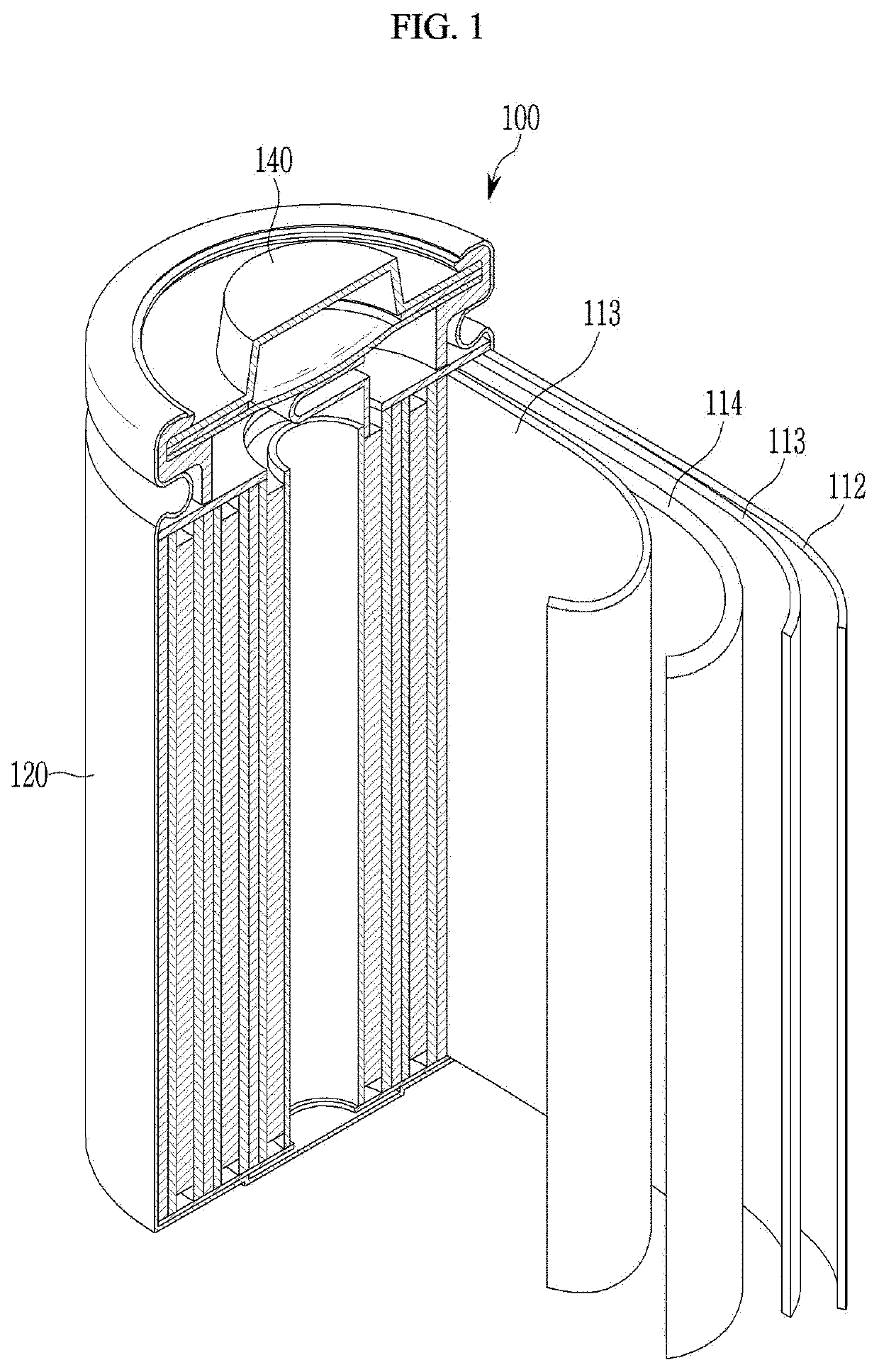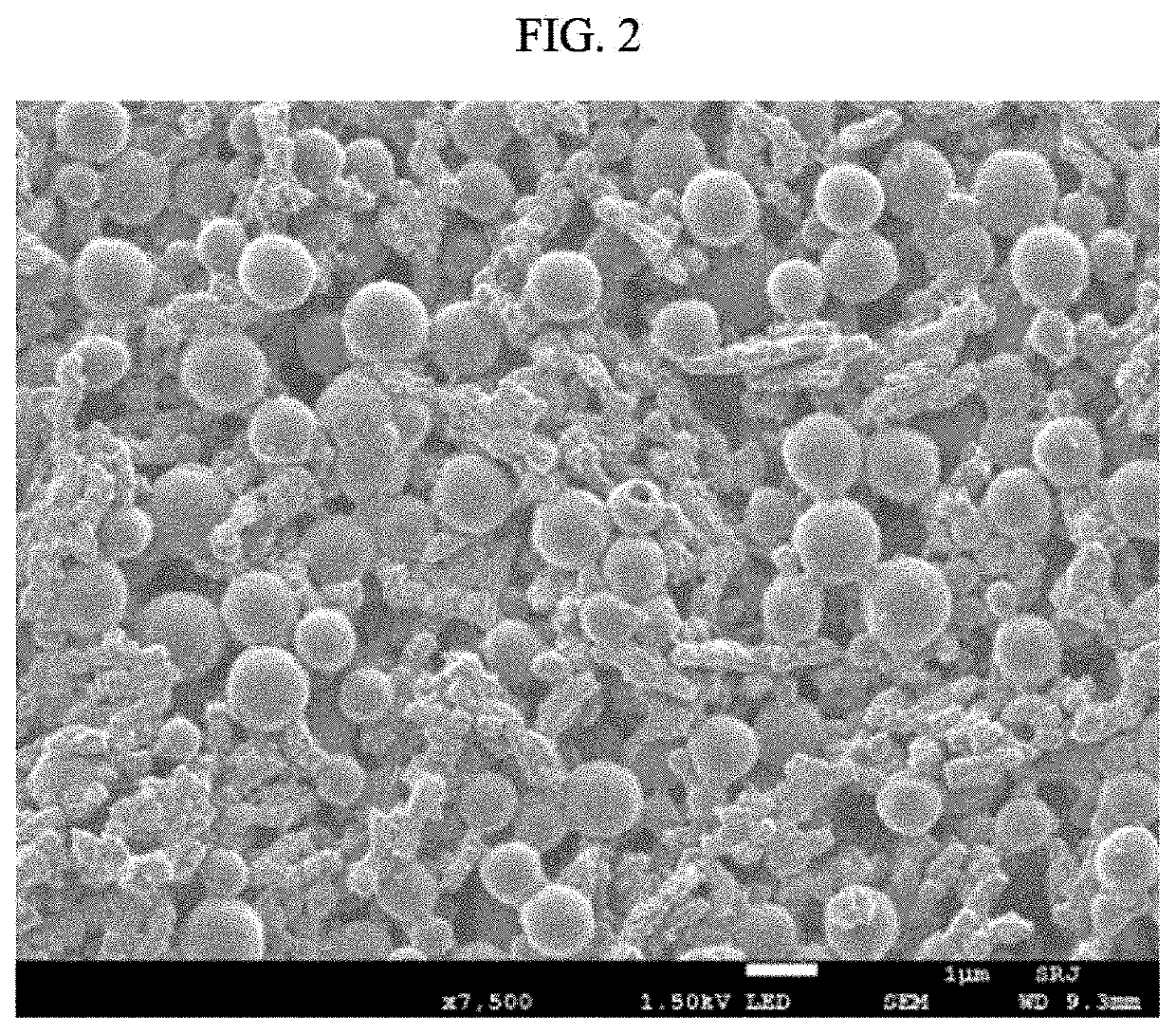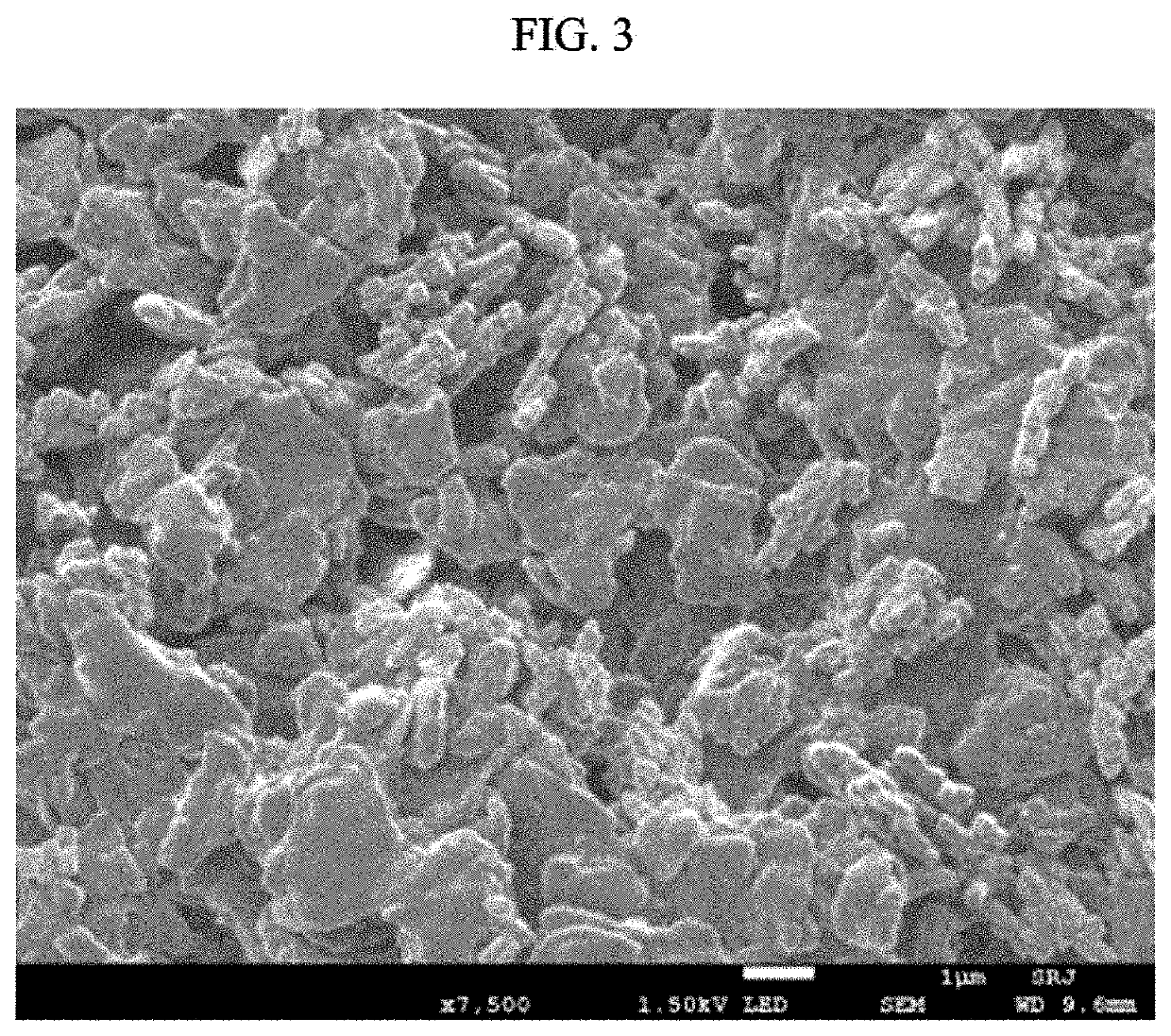Rechargeable lithium battery
a lithium battery and rechargeable technology, applied in the direction of positive electrodes, cell components, electrochemical generators, etc., can solve the problems of high risk of explosion, internal battery, user fatal damage, etc., and achieve the effect of improving electrolyte impregnation and stability
- Summary
- Abstract
- Description
- Claims
- Application Information
AI Technical Summary
Benefits of technology
Problems solved by technology
Method used
Image
Examples
example 1-1
[0131]LiCoO2 and LiFePO4 were mixed in a weight ratio of 9:1 to prepare a positive active material, and 95 wt % of the positive active material, 3 wt % of a polyvinylidene fluoride binder, and 2 wt % of a ketjen black conductive material were mixed in an N-methylpyrrolidone solvent to prepare positive active material slurry. The positive active material slurry was coated both surfaces of an aluminum current collector and then, dried and compressed to manufacture a positive electrode having a positive active material layer.
[0132]98 wt % of artificial graphite, 0.8 wt % of carboxylmethyl cellulose, and 1.2 wt % of a styrene-butadiene rubber were mixed in pure water to prepare negative active material slurry. The negative active material slurry was coated on both surfaces of a copper current collector and then, dried and compressed to manufacture a negative electrode having a negative active material layer.
[0133]48 wt % of flake-shaped polyethylene (PE) particles (an average particle d...
example 1-2
[0137]A rechargeable lithium battery cell was manufactured according to the same method as Example 1-1 except that flake-shaped PE particles (an average particle diameter: 4 μm, a long axis length / a short axis length: about 2.4, a thickness: about 0.6 μm) instead of the flake-shaped polyethylene (PE) particles of Example 1-1 (an average particle diameter (D50): 2 μm, a long length axis length / a short axis length: about 2, a thickness: about 0.6 μm) were used to form a negative electrode functional layer.
example 1-3
[0138]A rechargeable lithium battery cell was manufactured according to the same method as Example 1-1 except that flake-shaped PE particles (an average particle diameter: 6 μm, a long axis length / a short axis length: about 2.4, a thickness: about 0.6 μm) instead of the flake-shaped polyethylene (PE) particles of Example 1-1 (an average particle diameter (D50): 2 μm, a long axis length / a short axis length: about 2, a thickness: about 0.6 μm) were used to form a negative electrode functional layer.
PUM
| Property | Measurement | Unit |
|---|---|---|
| particle size | aaaaa | aaaaa |
| thickness | aaaaa | aaaaa |
| thickness | aaaaa | aaaaa |
Abstract
Description
Claims
Application Information
 Login to View More
Login to View More - R&D
- Intellectual Property
- Life Sciences
- Materials
- Tech Scout
- Unparalleled Data Quality
- Higher Quality Content
- 60% Fewer Hallucinations
Browse by: Latest US Patents, China's latest patents, Technical Efficacy Thesaurus, Application Domain, Technology Topic, Popular Technical Reports.
© 2025 PatSnap. All rights reserved.Legal|Privacy policy|Modern Slavery Act Transparency Statement|Sitemap|About US| Contact US: help@patsnap.com



